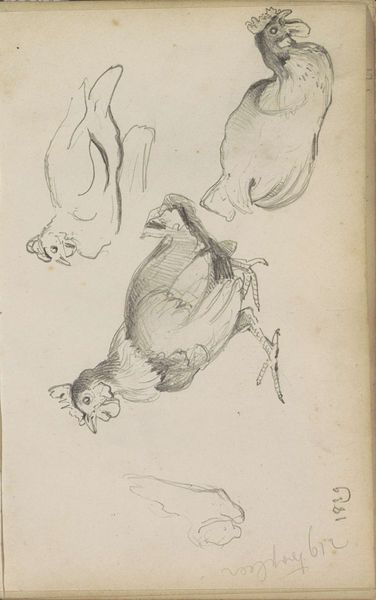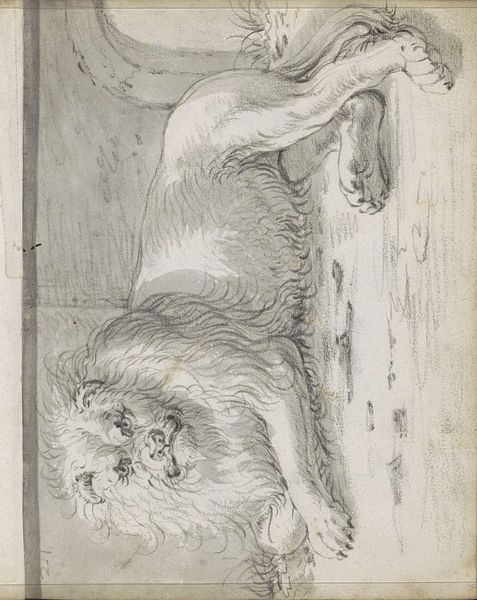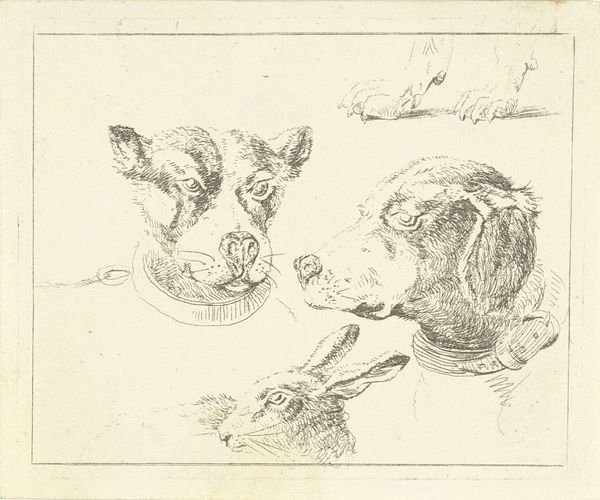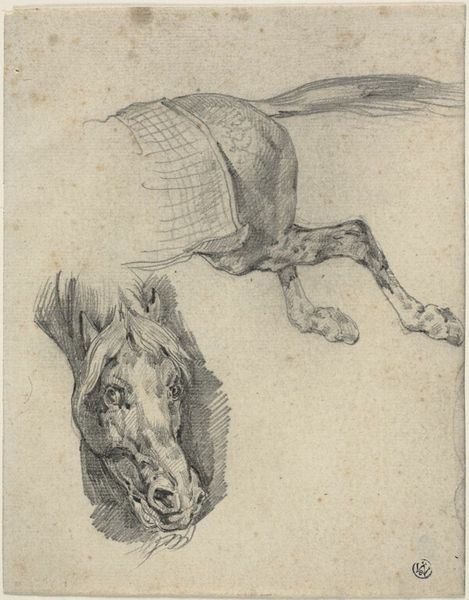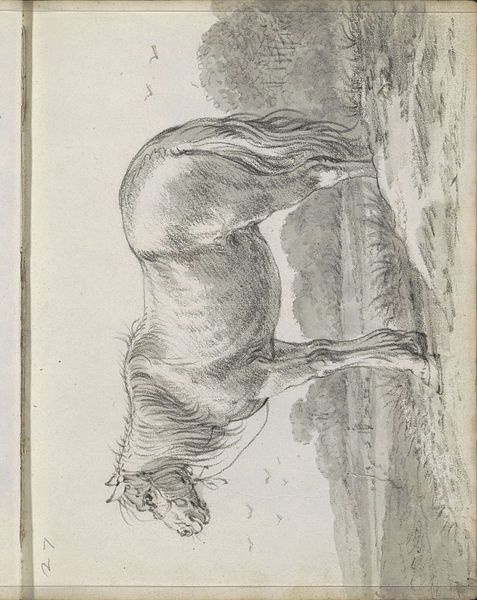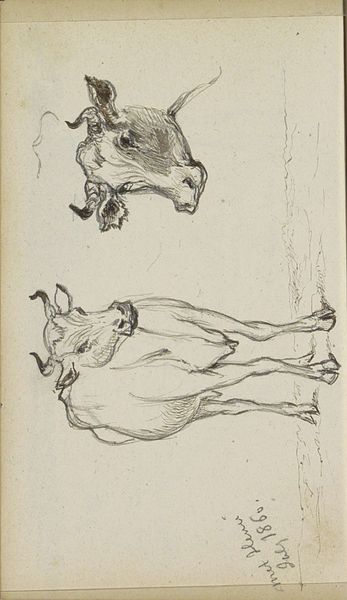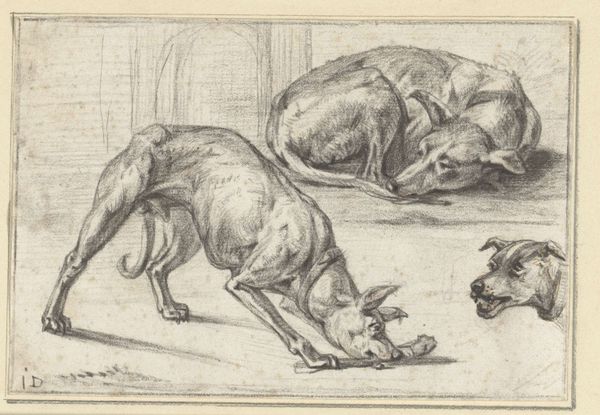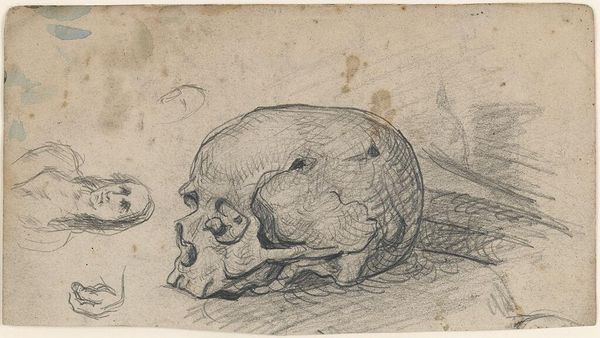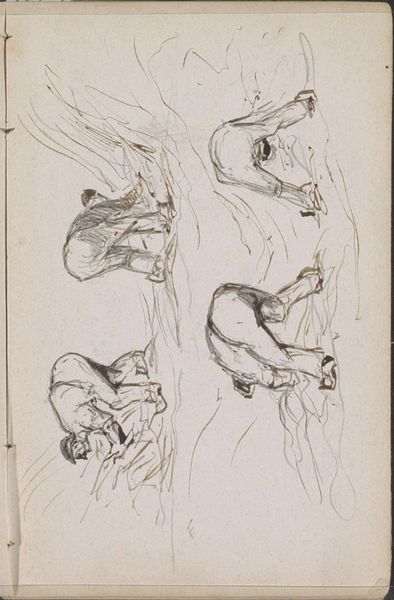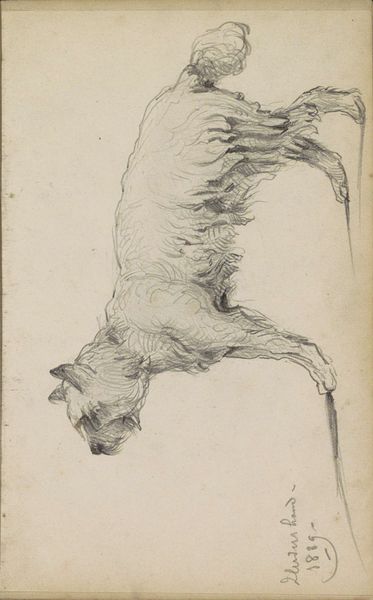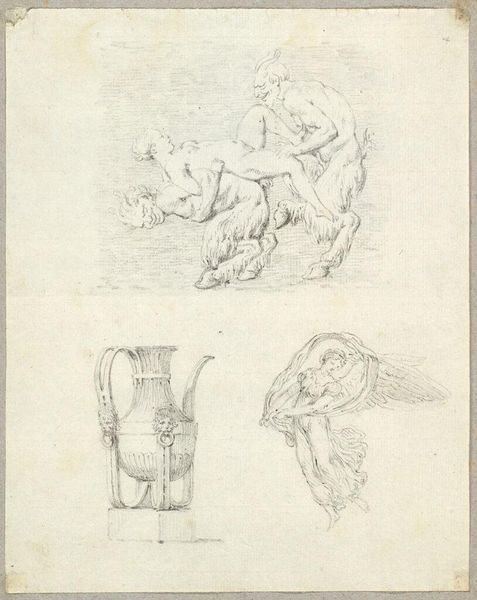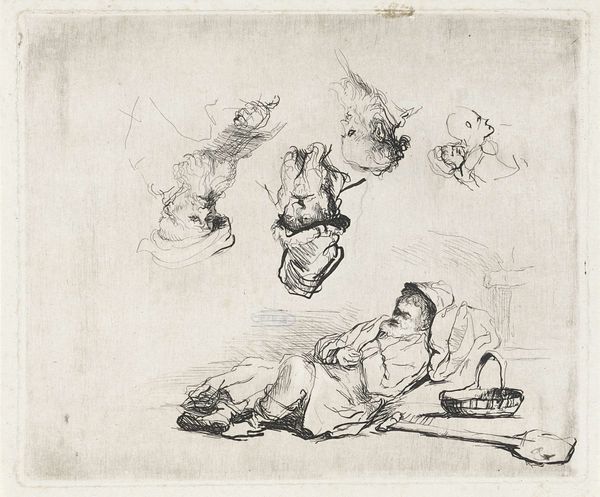
drawing, pencil, charcoal
#
portrait
#
pencil drawn
#
drawing
#
animal
#
dutch-golden-age
#
pencil sketch
#
dog
#
pencil drawing
#
pencil
#
charcoal
Copyright: Rijks Museum: Open Domain
Curator: Cornelis Saftleven's "Head of a Dog and a Monkey," a pencil and charcoal drawing from 1666, strikes me with its rather stark simplicity. There’s something very raw about the depiction of these animals. What catches your eye? Editor: I'm interested in the choice of materials – a simple pencil and charcoal sketch rather than a more elaborate painting. What do you think Saftleven’s use of these accessible materials might say about his artistic practice or the intended audience for this piece? Curator: It’s tempting to view Saftleven's choice of pencil and charcoal not as a limitation, but as a conscious decision linked to accessibility and function. Was this preparatory work? Consider the 17th century's burgeoning market for prints. The directness of a sketch lends itself well to reproduction. The very *process* implies wider distribution and consumption. How does thinking about mass production alter your understanding? Editor: That makes sense. I hadn't thought about it in terms of printmaking and distribution. So, it wasn't necessarily about elevating the subject matter, but about making it reproducible, potentially for a wider audience beyond the traditional art patrons. Does this affect how we should view this drawing in an art gallery setting? Curator: Precisely! Instead of admiring only "high art", we recognize the artistry involved in crafting imagery for a burgeoning middle class. We confront the democratization of image-making. Could these subjects be reflections of popular allegories, accessible even to those without extensive education? Editor: I suppose so! Viewing this as something meant to be reproduced does recontextualize its importance to the cultural moment. Curator: Exactly. And thinking about the labor and materials involved adds another layer of appreciation, shifting it away from a simple “animal portrait” to an object deeply embedded in the social and economic fabric of its time. Editor: This definitely gives me a new appreciation for what might seem like a simple drawing. It’s about thinking beyond the image itself, considering its production, distribution, and intended consumption. Thanks!
Comments
No comments
Be the first to comment and join the conversation on the ultimate creative platform.
